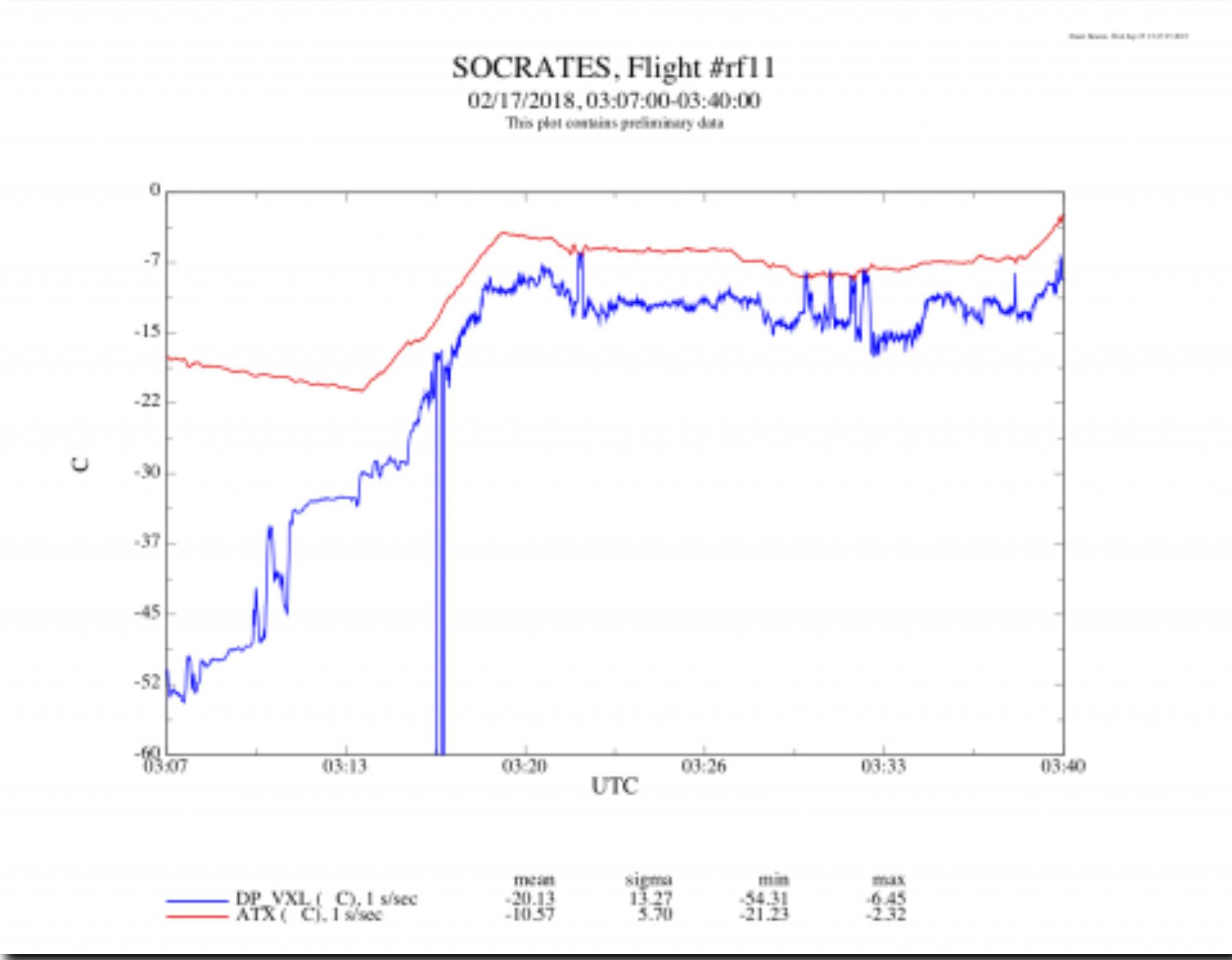Vertical Cavity Surface-Emitting Laser (VCSEL) Hygrometer
The VCSEL hygrometer employs tunable diode laser absorption spectroscopy to determine the water vapor number density over a dew-point range of -90 to +30º C. It reports the water vapor number density at 25 samples per second From the number density other humidity-related parameters such as dew/frost point, mixing ratio, etc. are derived. It is mounted on a GV aperture plate, weighs 3.2 kg and draws less than 20W from 120 VAC, 60 Hz.
The hygrometer operates in two absorption modes on two wavelengths near 1853 nm: wavelength modulation on a weak absorption line used for high mixing ratio conditions, direct absorption on a strong line for moderately low mixing ratios, and wavelength modulation on the same strong line for low mixing ratios. The sample volume is an open-path Herriott cell, giving an absorption length of 375 cm in a volume approximately 15 cm long and 2 cm diameter.
Measurements Provided: Water vapor concentration from which related values (mixing ratio, dew point, etc.) are derived.
Typical Sampling Rates: 25 samples per second
Measurement Characteristics: 5% uncertainty from lower troposphere to lower stratosphere. 25 samples per second. Because it is an external open-path cell there is no delay or carryover between samples.
History of Significant Changes: 8/2010: Replaced gold mirrors with more rugged dielectric mirrors. 2013: New calibration by Princeton group. 7/2018: Significant repair. Recalibration required.
Example(s) of Measurement:
Data shown below is the one second housekeeping data (beginning with SWS) and the 25 samples per second mixing ratio and dew point data. Not shown is the spectrum which is generated every 5 minutes for QC check. Data lines are terminated with CR/NL.
The 25 s/s data record consists of the number density (#/cc), laser intensity, approximate dew point (°C), and # of spectral scans averaged, normally 60.
SWS 1199 544 295.9 628.9 9430 9431 408 D 0.0794 2000 30 4095 52 0 7.0 2718 4.13E+15 1788 -41.16 60
3.67E+15 2804 -42.28 60
3.67E+15 2757 -42.27 60
3.68E+15 2756 -42.25 60
3.68E+15 2757 -42.26 60
3.67E+15 2757 -42.27 60
3.67E+15 2757 -42.27 60
3.68E+15 2757 -42.26 60
3.67E+15 2757 -42.27 60
3.66E+15 2757 -42.30 60
3.67E+15 2757 -42.29 60
3.66E+15 2757 -42.29 60
3.67E+15 2756 -42.28 60
3.66E+15 2758 -42.30 60
3.65E+15 2757 -42.33 60
3.66E+15 2757 -42.30 60
3.67E+15 2757 -42.28 60
3.67E+15 2756 -42.29 60
3.66E+15 2757 -42.31 60
3.67E+15 2758 -42.29 60
3.67E+15 2756 -42.28 60
3.67E+15 2756 -42.27 60
3.67E+15 2757 -42.27 60
3.62E+15 2756 -42.40 1
Below is an example taken from the SOCRATES project showing the air temperature (ATX, red line) and the VCSEL derived dew point temperature (DP_VXL, blue line). At the start of the plot the aircraft is at ~4500 m altitude, drops to ~ 2000 m altitude where it passes through some clouds, and then at the very end is again descending. At 03:17 the VCSEL hygrometer switches from the mid-humidity mode to the high-humidity mode. The brief dropout at that time is a result of tuning the laser to the different water vapor absorption line.

When referencing the Vertical Cavity Surface-Emitting Laser (VCSEL) Hygrometer in publications or proposals, please use the identifier 10.5065/D6PV6HDM -- for example, as a citation:
NSF NCAR Earth Observing Laboratory. (2005). Vertical Cavity Surface-Emitting Laser (VCSEL) Hygrometer. NSF NCAR Earth Observing Laboratory. https://doi.org/10.5065/D6PV6HDM